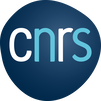IHP Winter School: The Mathematics of Imaging
Ecole d’hiver IHP : Les mathématiques de l’image
7 – 11 January 2019
|
Scientific & Organizing Committee
Comité scientifique d’organisation Jean-François Aujol (Université de Bordeaux & IUF) |
|
This Winter school is intended to be a pre-school for the thematic trimester entitled “The Mathematics of Imaging” that will be held in Paris at the IHP (Institut Henri Poincaré), from 7 January to 5 April 5 2019, co-organized by J.F. Aujol, J. Delon, A. Desolneux, J. Fadili, B. Galerne and G. Peyré.
The pre-school will contain courses, practical sessions, flash presentations and poster sessions. |
Cette école d’hiver est une semaine d’introduction au trimestre thématique intitulé « Les mathématiques de l’image » qui se tiendra à l’IHP (Institut Henri Poincaré) à Paris du 7 janvier au 5 avril 2019, organisé conjointement par J.F. Aujol, J. Delon, A. Desolneux, J. Fadili, B. Galerne et G. Peyré.
Cette semaine comprendra des cours, des sessions pratiques, des présentations flash et des sessions posters. |
Variational methods are among the most classical and established methods to solve a multitude of problems arising in computer vision, image processing and beyond. My presentation covers four parts: First, I will introduce the basic concepts of variational methods and present a number of examples. Second, I will show how respective energies can be derived from the principle of Bayesian inference. Third, I will discuss techniques of convex relaxation and functional lifting which allow us to compute globally optimal or near-optimal solutions to certain non-convex energy minimization problems. And lastly, I will present variational methods for 3d reconstruction and visual SLAM (simultaneous localization and mapping). If time permits, I will talk about convex relaxations for elastic shape matching.
(slides part 1) – VIDEO –
(slides part 2) – VIDEO –
(slides part 3) – VIDEO –
(slides part 4) – VIDEO –
This course presents an overview of modern Bayesian strategies for solving imaging inverse problems. We will start by introducing the Bayesian statistical decision theory framework underpinning Bayesian analysis, and then explore efficient numerical methods for performing Bayesian computation in large-scale settings. We will pay special attention to high-dimensional imaging models that are log-concave w.r.t. the unknown image, related to so-called “convex imaging problems”. This will provide an opportunity to establish connections with the convex optimisation and machine learning approaches to imaging, and to discuss some of their relative strengths and drawbacks. Examples of topics covered in the course include: efficient stochastic simulation and optimisation numerical methods that tightly combine proximal convex optimisation with Markov chain Monte Carlo techniques; strategies for estimating unknown model parameters and performing model selection, methods for calculating Bayesian confidence intervals for images and performing uncertainty quantification analyses; and new theory regarding the role of convexity in maximum-a-posteriori and minimum-mean-square-error estimation. The theory, methods, and algorithms are illustrated with a range of mathematical imaging experiments.
What you will learn in this course:- how fundamental hypothesis of statistical learning theory are challenged in practice (violation of independence, covariate shifts etc.) ;
- what are the most successful models in data challenges and how they work ;
- how to automate model search and hyperparameter selection ;
- learn about great packages for machine learning using Python ;
- how to conduct rigorous machine learning experiments by competing on a data challenge.
Abdullah Abdulaziz (Heriot-Watt University) Wideband Super-resolution Imaging in Radio Interferometry (HyperSARA) (slides)
Stanislav Budzinskiy (Lomonosov Moscow State University) Estimating defocus and astigmatism of the optical transfer function by frequency scaling (slides)
Vanna Lisa Coli (Université Côte d’Azur) Multiscale Tomography Imaging and Modelling Ancient Materials (slides)
Valentin De Bortoli (CMLA) Macrocanonical texture synthesis (slides)
Guozhi Dong (HU-Berlin & WIAS-Berlin) Second order hyperbolic quasilinear PDEs and their applications in image problems (slides)
Nicolas Jouvin (Université Paris 1 Panthéon-Sorbonne) Mixture of multinomial PCA: towards a joint analysis of histopathological texts and images (slides)
Nicolas Gonthier (Université Paris Saclay) Weakly Supervised Object Detection in Artworks (slides)
Irène Kaltenmark (INRIA Bordeaux) An adaptive watershed by flooding algorithm for an atlas of brain parcellations (slides)
Claire Launay (Université Paris Descartes) Determinantal point processes and images (slides)
Daniel Martins Antunes (Université Savoie Mont Blanc) Digital Curvature Flow (slides)
Camille Pouchol (KTH) Motion correction for medical imaging (slides)
Pierre Roussillon (Télécom ParisTech) Fibers Bundles Registration and Anatomical Consistency (slides)
Christiane Schmidt (University of Hamburg) Magnetic particle imaging – a dynamic inverse problem – (slides)
Kewei Zhang (University of Nottingham) On Hausdorff Stable Image Approximation and In painting Method (slides)
Ana Fernandez Vidal (Heriot-Watt University) Maximum Likelihood Estimation of Regularisation Parameters
Giorgia Franchini (University of Modena and Reggio Emilia) On the steplength selection in Stochastic Gradient Methods
Sebastian Neumayer (University of Kaiserslautern) Morphing of Manifold-Valued Images inspired by Discrete Geodesics in Image Spaces
Antonio Orlando (National University of Tucumán) Singularity Extractions by Compensated Convex Transforms and its Applications to Imaging Science and Shape Interrogation
Daniele Picone (Grenoble Images Parole Signal Automatique) Unifying image fusion and compression: A variational approach
Cécilia Tarpau (Laboratoire de Mathématiques de Versailles) Circular Compton Scattering Tomography
Bogdan Toader (University of Oxford) Non-negative super-resolution is stable
Raphaël Truffet (Univeristé de Rennes, Inria, IRISA, CNRS) Optimal selection of diffusion-weighting gradient waveforms using compressed sensing and dictionary learning
Elisabeth Wetzer (Uppsala University) Automation of detection and analysis of Glomerulus by fusion of LBP maps and CNN







